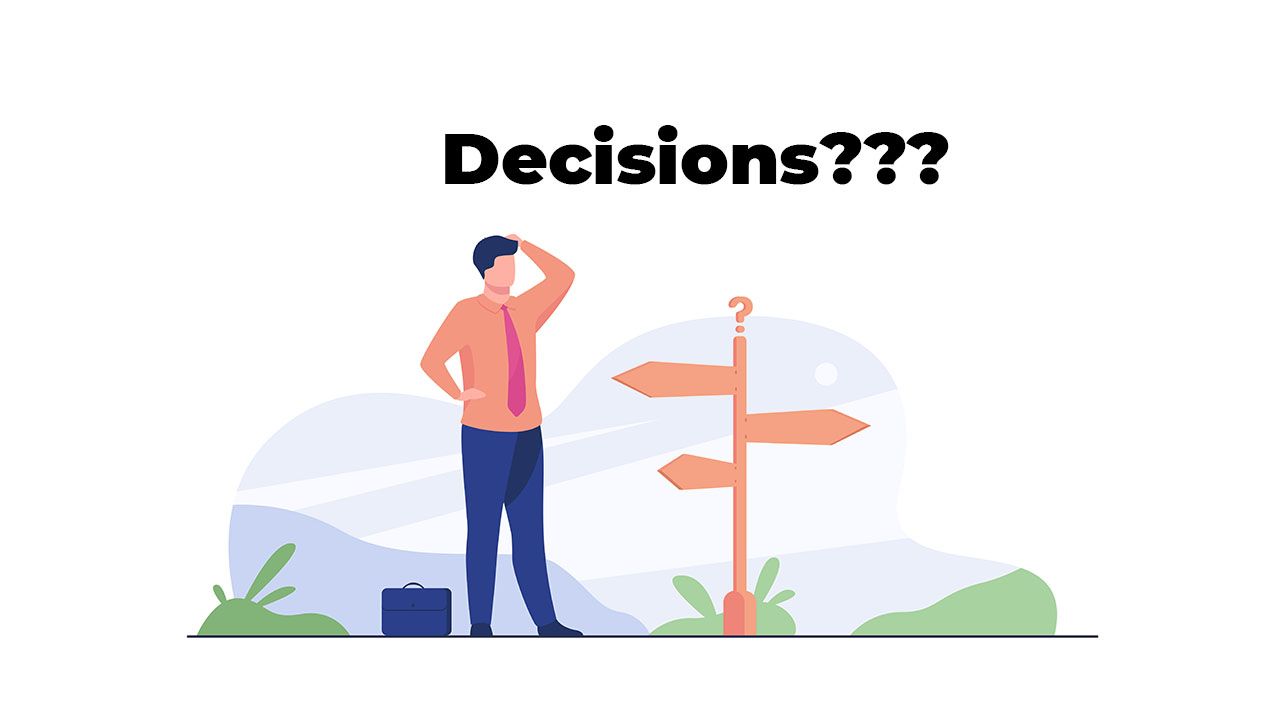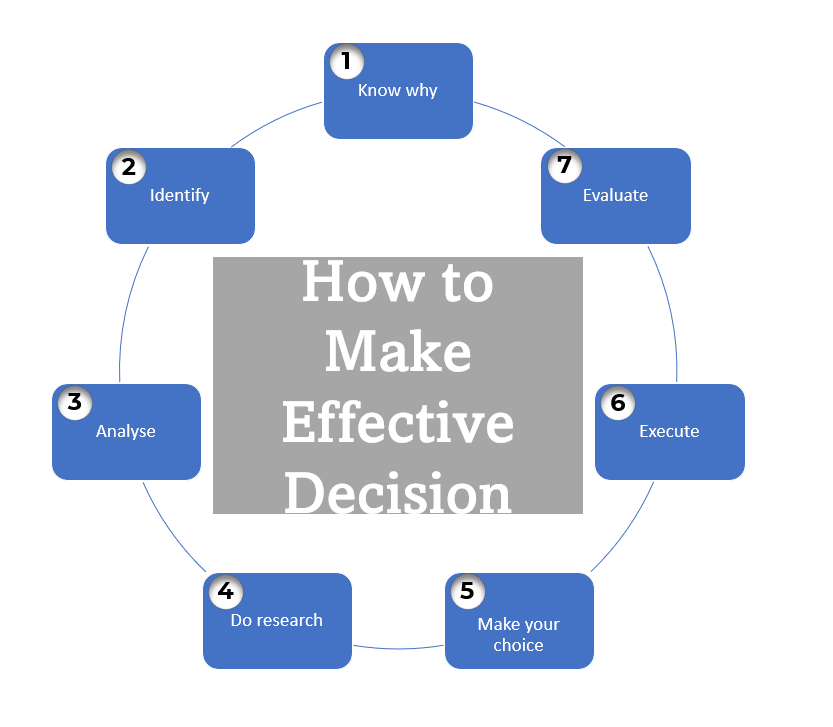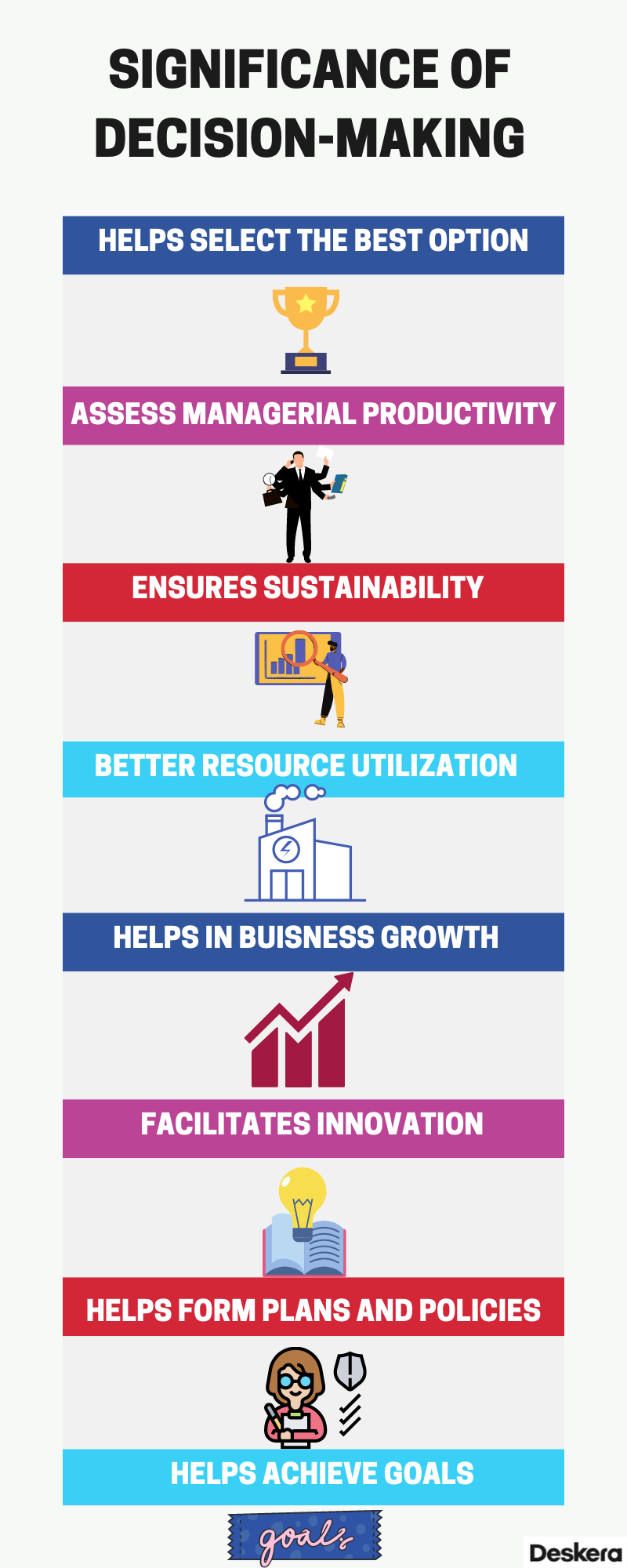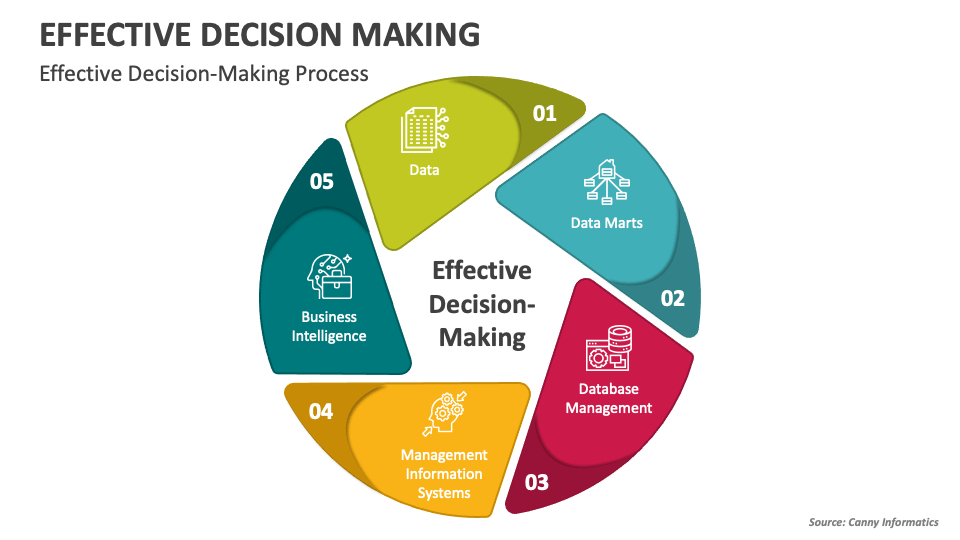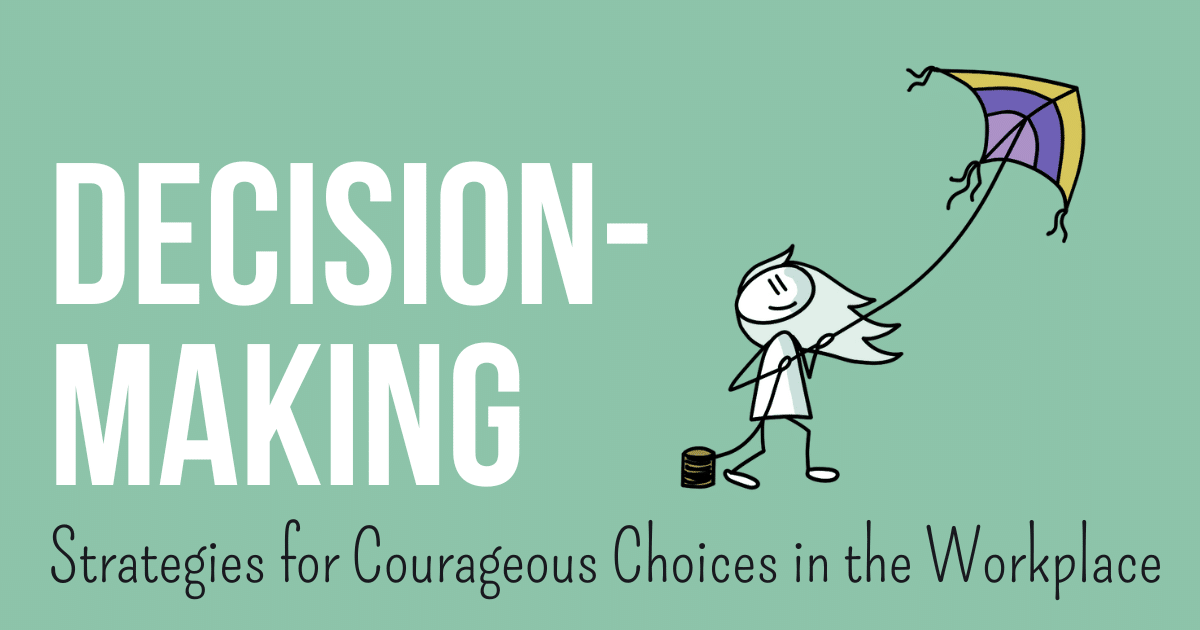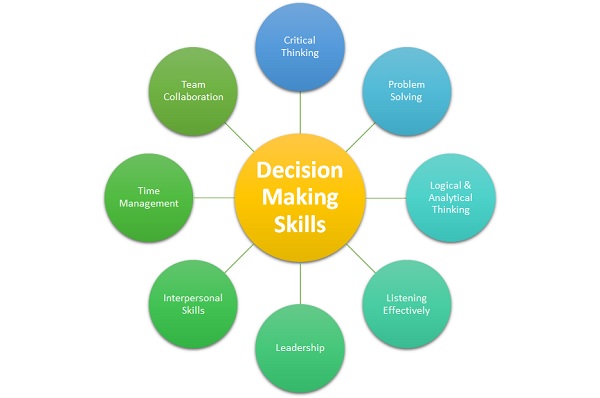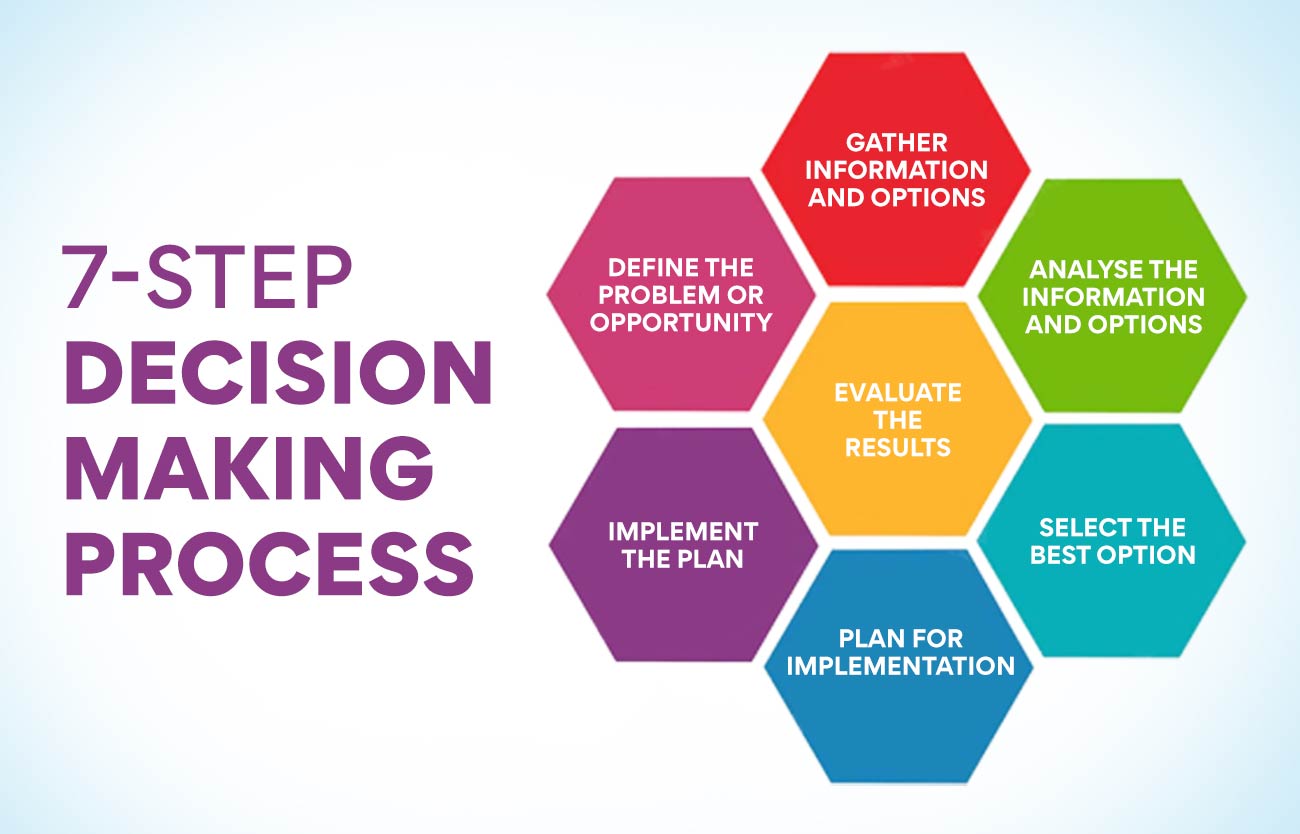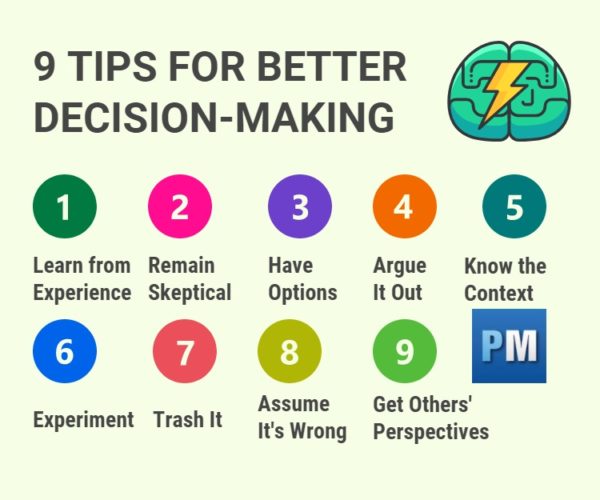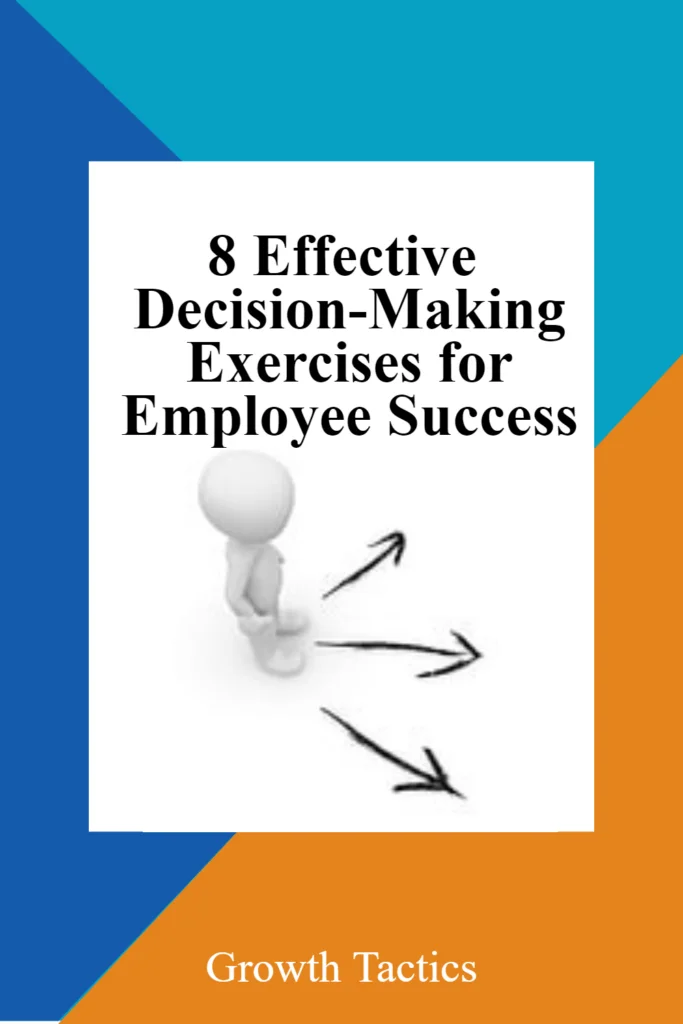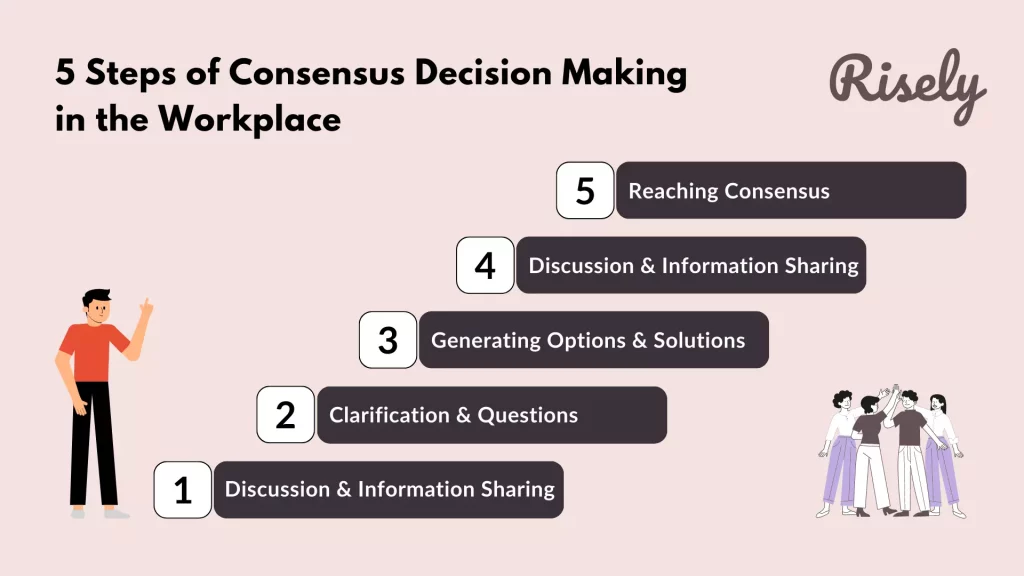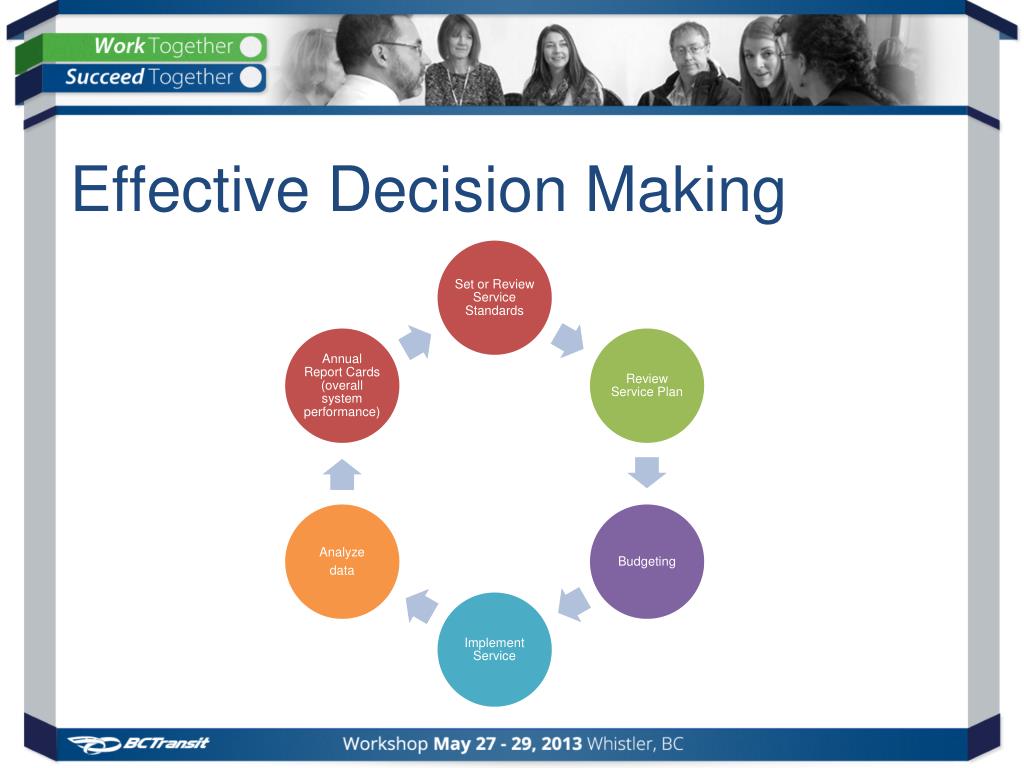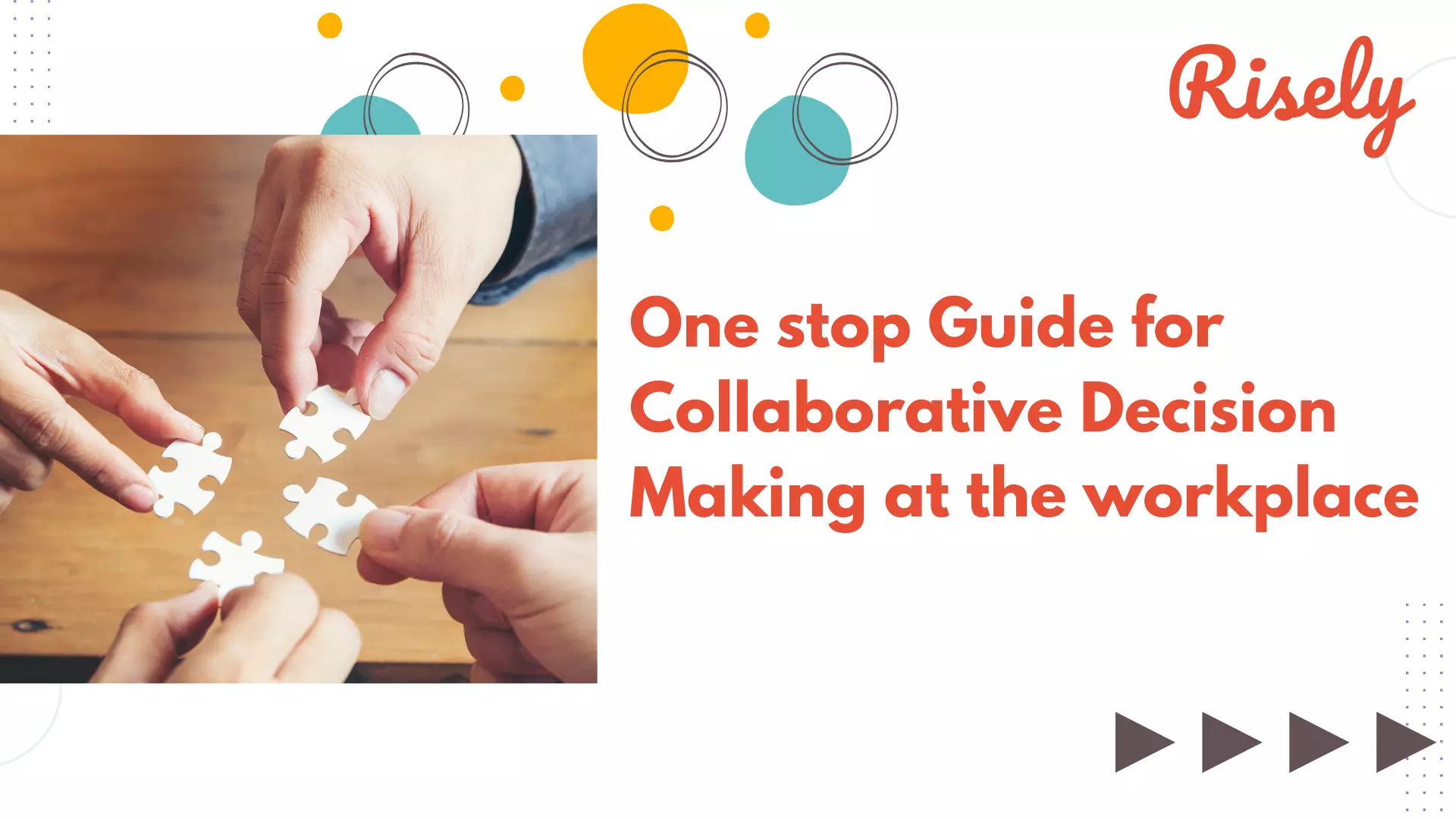Effective Decision Making In The Workplace
:max_bytes(150000):strip_icc()/decision-making-skills-with-examples-2063748-FINAL-5bad43d946e0fb002688e130.png)
Imagine a bustling office, the air thick with the quiet hum of keyboards and hushed conversations. A whiteboard, usually pristine, is now covered in colorful sticky notes, a testament to a team wrestling with a critical project decision. The team members lean forward, their faces a mix of determination and mild frustration. This is the daily crucible where companies either forge ahead or stagnate, all hinging on the seemingly simple act of making effective decisions.
At the heart of every successful organization lies the ability to make sound judgements, navigate complexities, and ultimately, drive progress. Effective decision-making in the workplace is not just about choosing the best option; it's a strategic process that involves understanding the problem, exploring alternatives, and implementing solutions with confidence. It fosters innovation, boosts team morale, and strengthens a company's competitive edge.
The Foundation of Sound Judgement
The journey to better decision-making starts with understanding its fundamental building blocks. According to research from the Harvard Business Review, effective decision-making hinges on two key elements: quality and acceptance. Quality refers to the objective correctness of the decision, while acceptance reflects how well the decision is embraced by those who will be affected by it.
A decision may be technically sound but fail if those who need to implement it resist. Similarly, a popular choice that's ultimately flawed can lead to costly mistakes. Striking a balance between these two is crucial for optimal outcomes.
Understanding the Landscape
Before diving into solutions, the problem itself must be clearly defined. This often involves gathering relevant data, consulting with experts, and ensuring everyone is on the same page. Transparency is key. Open communication fosters a culture of trust and encourages employees to share their perspectives without fear of judgement.
Consider the case of a tech company struggling with low employee retention. Instead of blindly offering raises, they conducted surveys, held focus groups, and analyzed exit interviews to identify the root causes. They discovered issues such as lack of career development opportunities and feelings of being undervalued. This deeper understanding led to targeted solutions, improving employee satisfaction and retention rates.
Navigating the Options
Once the problem is defined, the next step involves generating a diverse range of potential solutions. Brainstorming sessions, cross-functional collaborations, and even techniques like the "Six Thinking Hats" can help teams explore different angles and avoid groupthink. The goal is to create a rich pool of ideas from which to choose.
Evaluating these options requires careful consideration of the potential benefits, risks, and resources required for each. Tools like SWOT analysis (Strengths, Weaknesses, Opportunities, Threats) can provide a structured framework for assessing the feasibility and impact of different courses of action.
The Role of Emotional Intelligence
While data and analysis are essential, effective decision-making also involves understanding and managing emotions. Emotional intelligence (EI) plays a crucial role in both individual and group settings. It allows individuals to recognize and respond to their own emotions and those of others, fostering empathy and constructive communication.
Leaders with high EI are better equipped to navigate conflict, build consensus, and motivate their teams. They create an environment where everyone feels valued and empowered to contribute their best ideas.
Implementation and Reflection
A well-crafted decision is only half the battle. Successful implementation requires a clear action plan, defined roles and responsibilities, and effective communication. Regular monitoring and feedback loops are essential to track progress and make adjustments as needed.
After a decision is implemented, it's important to take time to reflect on the process. What went well? What could be improved? This continuous learning cycle helps individuals and teams refine their decision-making skills over time. According to Peter Drucker, "What gets measured, gets managed."
Consider this: Google, for example, uses data and analytics to continuously refine its processes and improve its decision-making across various departments. From marketing campaigns to product development, every decision is informed by data and subject to ongoing evaluation.
Ultimately, effective decision-making is not a static skill but a dynamic process that evolves with experience and reflection. It’s about fostering a culture of curiosity, embracing diverse perspectives, and always striving for better outcomes. When businesses commit to cultivating these competencies, they are much more likely to make choices that drive success.
As the sticky notes are peeled from the whiteboard, signifying a decision reached, the team exhales, a collective sense of accomplishment washing over them. They know the road ahead may still be challenging, but they've armed themselves with the best possible tool: a carefully considered, well-informed decision, embraced by all.



